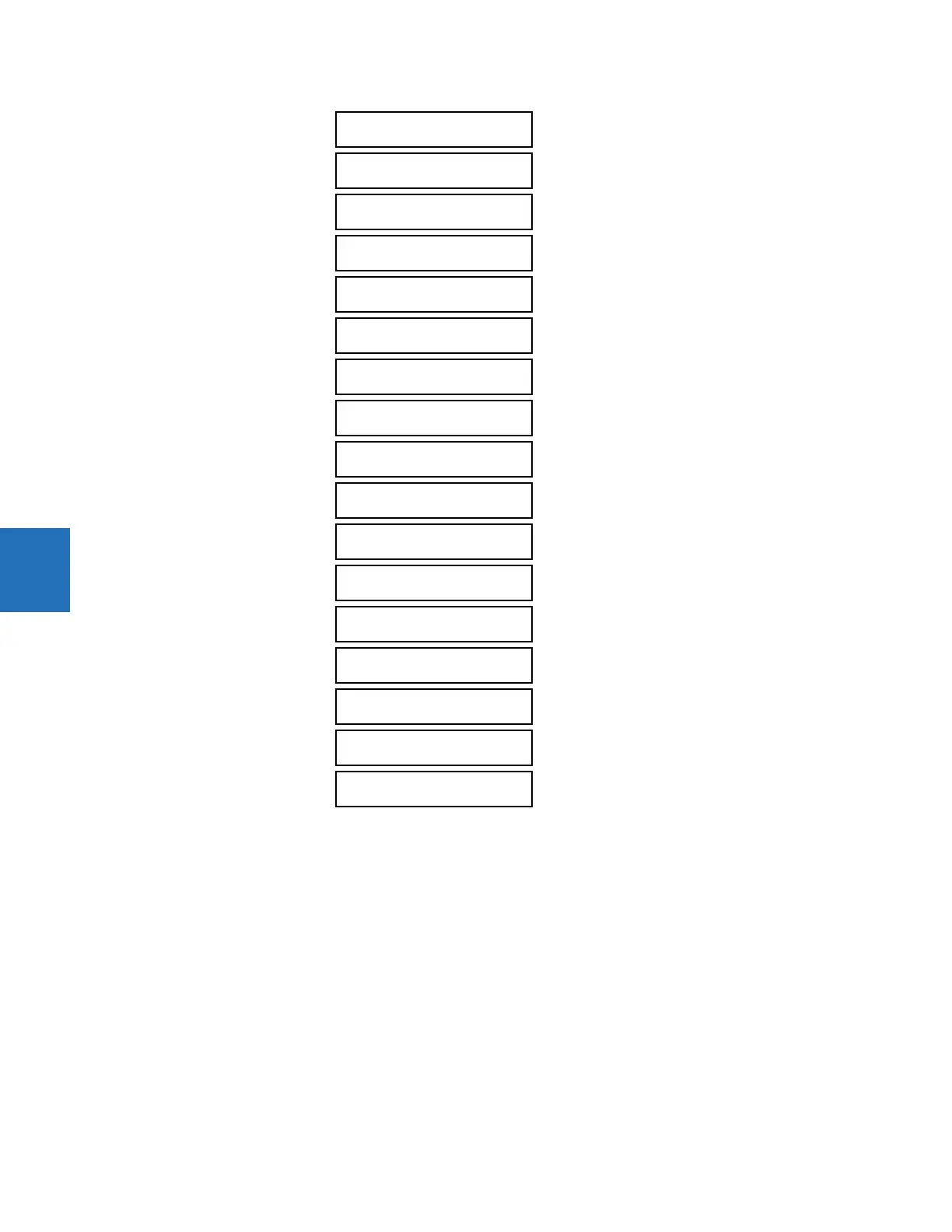5-246 L90 LINE CURRENT DIFFERENTIAL SYSTEM – INSTRUCTION MANUAL
GROUPED ELEMENTS CHAPTER 5: SETTINGS
5
The power swing detect element provides both power swing blocking and out-of-step tripping functions. The element
measures the positive-sequence apparent impedance and traces its locus with respect to either two or three user-
selectable operating characteristic boundaries. Upon detecting appropriate timing relations, the blocking and/or tripping
indications are given through FlexLogic operands. The element incorporates an adaptive disturbance detector. This
function does not trigger on power swings, but is capable of detecting faster disturbances—faults in particular—that can
occur during power swings. Operation of this dedicated disturbance detector is signaled via the POWER SWING 50DD
operand.
The power swing detect element asserts two operands intended for blocking selected protection elements on power
swings: POWER SWING BLOCK is a traditional signal that is safely asserted for the entire duration of the power swing, and
POWER SWING UN/BLOCK is established in the same way, but resets when an extra disturbance is detected during the power
swing. The POWER SWING UN/BLOCK operand can be used for blocking selected protection elements if the intent is to
respond to faults during power swing conditions.
Different protection elements respond differently to power swings. If tripping is required for faults during power swing
conditions, some elements can be blocked permanently (using the POWER SWING BLOCK operand), and others can be
blocked and dynamically unblocked upon fault detection (using the POWER SWING UN/BLOCK operand).
POWER SWING INNER
LIMIT ANGLE: 60°
Range: 40 to 140° in steps of 1
POWER SWING OUTER
RGT BLD: 100.00 Ω
Range: 0.10 to 500.00 ohms in steps of 0.01
POWER SWING OUTER
LFT BLD: 100.00 Ω
Range: 0.10 to 500.00 ohms in steps of 0.01
POWER SWING MIDDLE
RGT BLD: 100.00 Ω
Range: 0.10 to 500.00 ohms in steps of 0.01
POWER SWING MIDDLE
LFT BLD: 100.00 Ω
Range: 0.10 to 500.00 ohms in steps of 0.01
POWER SWING INNER
RGT BLD: 100.00 Ω
Range: 0.10 to 500.00 ohms in steps of 0.01
POWER SWING INNER
LFT BLD: 100.00 Ω
Range: 0.10 to 500.00 ohms in steps of 0.01
POWER SWING PICKUP
DELAY 1: 0.030 s
Range: 0.000 to 65.535 s in steps of 0.001
POWER SWING RESET
DELAY 1: 0.050 s
Range: 0.000 to 65.535 s in steps of 0.001
POWER SWING PICKUP
DELAY 2: 0.017 s
Range: 0.000 to 65.535 s in steps of 0.001
POWER SWING PICKUP
DELAY 3: 0.009 s
Range: 0.000 to 65.535 s in steps of 0.001
POWER SWING PICKUP
DELAY 4: 0.017 s
Range: 0.000 to 65.535 s in steps of 0.001
POWER SWING SEAL-IN
DELAY: 0.400 s
Range: 0.000 to 65.535 s in steps of 0.001
POWER SWING TRIP
MODE: Delayed
Range: Early, Delayed
POWER SWING BLK:
Off
Range: FlexLogic operand
POWER SWING
TARGET: Self-reset
Range: Self-reset, Latched, Disabled
POWER SWING
EVENTS: Disabled
Range: Disabled, Enabled
